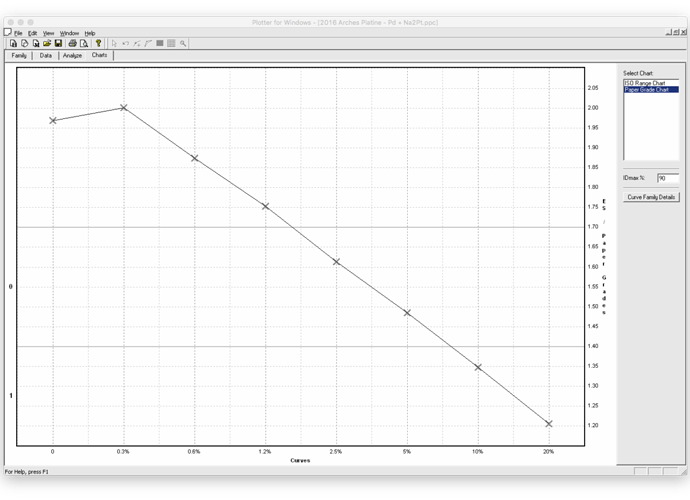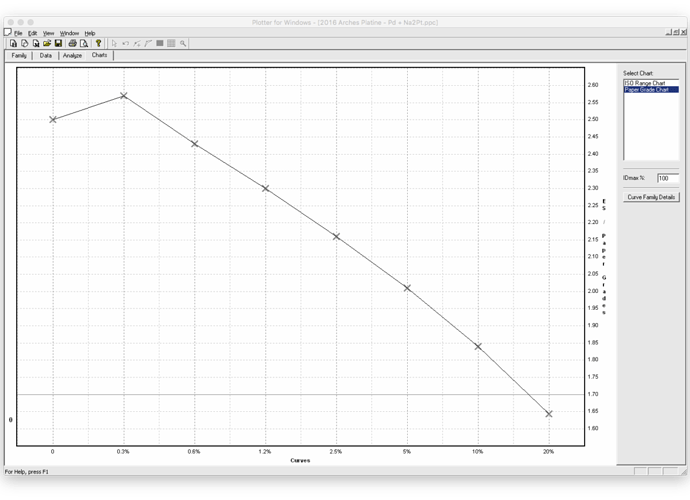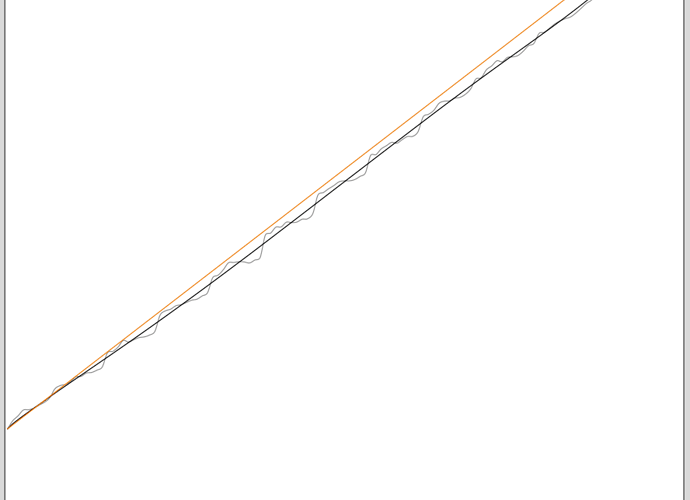Dear Keith
Thank you again for your answers!!
According to your reply about Na2 and how to dilute it, please correct me if i am wrong.
The conclusion is: I need to use 'just" enough “strength” of Na2 solution for “avoiding fog” for my prints…but the strength of the Na2 counts on 2 factors, 1, the size of the print (according to the table in your website)…2, the contrasty level of the negative. Which means i cannot use , for example, 2 drops of 1.25% Na2 solution to replace 1 drop of 2.5% solution…the “strength” of the Na2 must be specific to print size and negative contrary level…is that correct? : )
Harris
With digital negatives, we have the luxury of tailoring them to our process. Generally speaking, most Pt/Pd printers would agree that the longer the scale the better, so we aim to use the minimum amount of restrainer if we use any at all. On my chart, this means look at the top row only. The rest of the chart is for working with original film negatives where try as I might to get them perfect for the process via exposure and development controls, I don’t always hit the target (and sometimes I’m way off) so the full range of contrast control is very useful.
You certainly can use 2 drops of 1.25% in place of 1 drop of 2.5%. If you look on the chart at the higher contrast levels and larger volumes you will see multiple drops of 20% listed. If you want to use only a working solution of 1.25% and use multiple drops for volumes larger than 2ml there is no reason not to. You would simply use 2 drops for 4ml, 3 drops for 6ml, 4 drops for 8ml, etc.
Here are a couple of graphs to illustrate what I was talking about earlier regarding the difference between printing with no Na2 and using the minimum effective amount. The graphs come from the old BTZS Plotter software by Phil Davis. The x-axis is NA2 %, the y-axis is resulting Exposure Scale in the print. The source data is readings from prints of a Stouffer 21-step using the full range of contrast control available with Na2. (Other restrainers, such as potassium chlorate in Ferric Oxalte-B or sodium dichromate added to potassium oxalate developer, behave in a similar fashion.) Notice that the first graph uses an IDmax (maximum Image Density) of 90%. This is an old standard from Kodak (and other film manufacturers) to compensate for the shouldering off of shadow separation as commercial silver paper approaches black. It is very relevant for printing Pt/Pd from large-format film negatives as well. With digital negatives, however, we can compensate via linearization for the shadow compression that is a characteristic of the printing process, so it makes more sense in my opinion to use the entire scale, hence the second graph has IDmax set at 100%.
As for the 0.3% and 0.6% Na2 levels, since the Stoufer 21-step is 4x5 inches, I use 0.25ml FO + 0.25ml Pd + 1 drop Na2 for these tests. At that small of a coating volume I needed the lower dilutions. I rarely use them for anything else unless making really small prints. The 0.3% here is equivalent to using 1.25% in a 2ml coating volume.
[attachment file=1621]
[attachment file=1622]
Dear Keith and Walker
By using 1.25% of Na2 for 129 patches test (i did both 2.5% and 1.25% for the 129 patches area)…i got this…it seems it is good right? Keith, do you think i need to do further linearization??? this is only the first one…it seems the highlight is a bit “down” and the over the tone goes down just a little bit.
Thank you very much for your (both Walker and Keith) teaching!!
Keith …please comment : )
Harris
That looks very good. I agree with your analysis and think it would be a good idea to do a second linearization.
Na2 (Sodium hexachloroplatinate) is not compatible with the standard platinum solution (Potassium tetrachloroplatinate). If you use them together you will get a grungy precipitate (not sure if this is the correct term technically) visible in the lighter tones. Use Na2 only with palladium.
When using Na2 to eliminate fog, you want to use the minimum amount necessary to accomplish that task without actually increasing contrast. I have tested this extensively, and refer you to the chart posted on my website. If you are working from Bostick & Sullivan’s 20% stock solution of Na2, here is how to make a set of serial dilutions. The dilutions I use most frequently are 1.25%, 2.5%, and 5%, depending on the volume needed for the image size and paper I am using.
- Example: for an image size / paper combination that requires 2ml of solution, use 1ml FO + 1ml Pd + 1 drop 1.25% Na2 + 2 drops Tween 20 or PhotoFlo
If you wish to use the standard platinum solution is your mix, maybe to get a less warm more neutral image hue, you will need to use a different method of "contrast control". The traditional A:B ratio method uses a minute amount of potassium chlorate in the Ferric Oxalate B sensitizer. Traditionally, with original large format film negatives of varying density range, we would vary the ratio of the plain (A) and modified (B) Ferric Oxalates. With this method I used a 12 drop system of measuring where 12 A + 0 B is used for the contrastiest negatives (longer exposure scale print), and 0 A + 12 B is for the softest negatives (shorten exposure scale print).
- Example: to get a result similar to the above example, use 11 drops FO-A + 1 drop FO-B + 2 drops Pt + 10 drops Pd + 2 drops Tween or PF.
Note: The 2 examples are probably not the exact same volume since drop size can vary, but it is fairly close. There is nothing that says you must use a 12 drop system - use whatever is convenient for you. But if you increase it you, will need to verify that 1 drop of B is sufficient to prevent fog since you are using relatively less of it.
In the first of the attached images, it looks to me like your exposure time should be closer to 360 than to 450, maybe around 400, especially since you are starting to see solarization on the uncovered part at 450.
What is the second image showing? It doesn’t reach black at all, and doesn’t look very smooth either. Is that HPtR without Tween?


